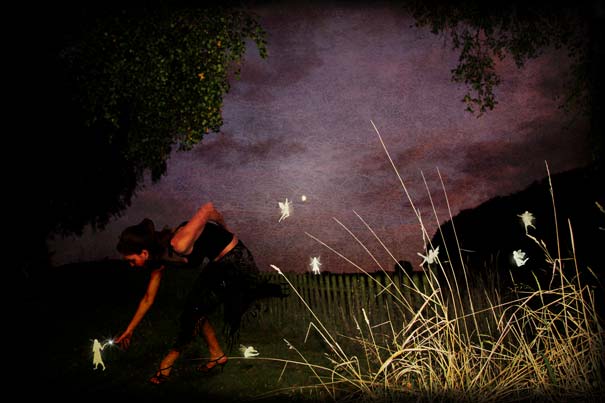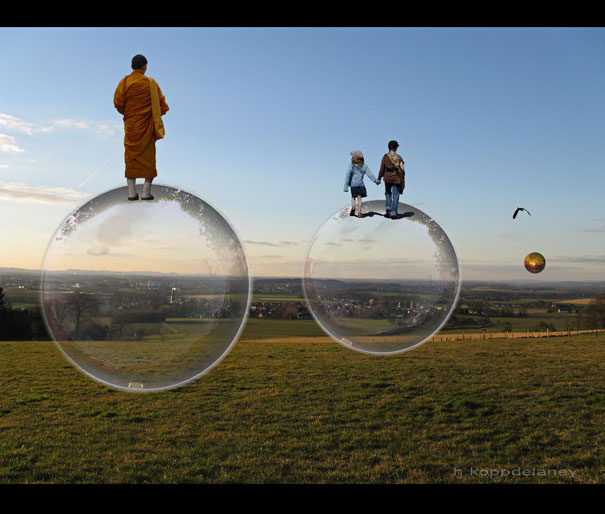Dreaming is one of the most mysterious and exciting experiences in our lives, so it is only natural, that we want to know as much as we can about the psychology of dreams.
Dreams played an important role in people’s lives as early as 3100 BC when the Mesopotamian civilization was born, and most of the governing decisions of this culture were based on the meaning of dreams. During the Roman Era, some dreams were even submitted to the Roman Senate for analysis and dream interpretation. They were thought to be messages from the gods. Dream interpreters also accompanied military leaders into battles and campaigns! And even to this day, we seek answers about our vivid dreams’ meanings, though most of the facts about dreams have been demystified and are now based on psychology.
In addition to this, it is also known that many artists and even scientists have received their best ideas from their dreams.
But what do we actually know about dream moods and their meanings?
Here are 15 interesting facts about dreams – enjoy! You might find the answer to the centuries-old question of why do we dream below.
1. You Forget 90% of Your Dreams
Within 5 minutes of waking half of your dream is forgotten. Within 10, 90% is gone. Remembering dreams can be difficult but there are few ways to do it. One is keeping a dream journal and trying to play back and note down everything that you can remember when you wake up. Keeping a regular dream journal will strengthen your cognitive abilities and train your mind to remember dreams better in the future.
2. Blind People Dream
People who became blind after birth can see images in their dreams. People who are born blind do not see any visuals, but have dreams equally vivid involving their other senses of sound, smell, touch and emotion.
3. Everybody Dreams
Every human being dreams (except in cases of extreme psychological disorder). If you think you are not dreaming – you just forget your dreams.
4. In Our Dreams, We Only See Faces That We Already Know
Our mind is not inventing faces – in our dreams, we see real faces of real people that we have seen during our life but may not know or remember. We have all seen hundreds of thousands of faces throughout our lives, so we have an endless supply of characters for our brain to utilize during our dreams.
5. Not Everybody Dreams in Color
Whilst everyone has different concepts of what dreams look like, a full 12% of sighted people dream exclusively in black and white. The remaining number have full-color dreams. Studies from 1915 through to the 1950s maintained that the majority of dreams were in black and white, but these results began to change in the 1960s. Today only 4.4% of the dreams of under-25 year-olds are in black and white. Recent research has suggested that those changing results may be linked to the switch from black-and-white film and TV to color media.
6. Dream Symbolism
If you dream about some particular subject it is not often that the dream is about that. Dreams speak in a deeply symbolic language. Whatever symbol your dream picks on it is most unlikely to be a symbol for itself. There’s no definitive guide to dream symbolism but people still continue to theorize on what dream imagery represents. For example, dreams about losing teeth could represent feeling shame in your life or fear of losing your confidence.
(bamboo for h.koppdelaney)
7. Emotions
The most common emotion experienced in dreams is anxiety. Negative emotions are more common than positive ones. Scientists believe that one of the reasons why we dream is for our minds to process our thoughts and emotions. Most often, this means carrying our stress and mental strains into our dreams too.
8. You can have four to seven dreams in one night.
On average you can dream anywhere from one or two hours every night. We often have multiple dreams within dreams that we cannot remember, with only the last dream before waking being taken into our waking consciousness.
9. Animals Dream Too
Studies have been done on many different animals, and they all show the same brain waves during dreaming sleep as humans. Watch a dog sleeping sometime. Their paws move like they are running and they make yipping sounds. And what do dogs dream about? No one knows exactly but we reckon they could be chasing cats or enjoying a juicy bone in their dreams.
10. Body Paralysis
Rapid eye movement (REM) sleep is a normal stage of sleep characterized by rapid movements of the eyes.REM sleep in adult humans typically occupies 20-25% of total sleep, about 90-120 minutes of a night’s sleep.
During REM sleep the body is paralyzed by a mechanism in the brain to prevent the movements which occur in the dream from causing the physical body to move. However, it is possible for this mechanism to be triggered before, during, or after normal sleep while the brain awakens. People who suffer from a stronger form of this – known as sleep paralysis – often report being unable to move whilst being both half awake and simultanously in a dream state.
11. Dream Incorporation
Our mind interprets the external stimuli that our senses are bombarded with when we are asleep and make them a part of our dreams. This means that sometimes in our dreams we hear a sound from reality and incorporate it in a way. For example, you may be dreaming that you are in a concert while your brother is playing guitar during your sleep.
12. Men and Women Dream Differently
Men tend to dream more about other men. Around 70% of the characters in a man’s dream are other men. On the other hand, a woman’s dream contains almost an equal number of men and women. Aside from that, men generally have more aggressive emotions in their dreams than the female lot.
13. Precognitive Dreams
Results of several surveys across large population sets indicate that between 18% and 38% of people have experienced at least one precognitive dream and 70% have experienced déjà vu. The percentage of persons that believe precognitive dreaming is possible is even higher – ranging from 63% to 98%.
*Precognition, also called future sight, refers to the perception that involves the acquisition of future information that cannot be deduced from presently available and usually acquired sense-based knowledge.
14. If you are snoring, then you cannot be dreaming.
This fact is repeated all over the Internet, but I’m a bit suspicious whether it’s really true as I haven’t found any scientific evidence to support it.
15. You can experience an o r g a s m in your dream
You can not only have s e x as pleasurable as in your real life while dreaming but also experience an o r g a s m as strong as a real one without any wet results. The sensations felt while lucid dreaming (touch, pleasure, etc.) can be as pleasurable and strong (or I believe even stronger) as the sensations experienced in the real world.
(Many many bamboos for all the dreamy images to alicepopkorn)
Well, I hope you had a great time reading these strange facts about our dreams. Now I’m going to my bed to check those facts once again. Good night and sweet dreams!
P.S.: don’t forget to share your weirdest dream experiences below!
P.P.S.: If you decide to learn more about it, this book could be a good way to start: The Dream Book: Symbols for Self Understanding
See Also:
Explore more of these tags
#4 is completely false. I have definitely dreamed of made-up faces. For example, I once dreamed of a cruel old lady with a thimble-shaped nose. Didn't look like anyone you'd find in real life, and didn't look like any character I've seen. Wonder where this 'fact' was pulled from. BS.
My dreams are vivid. I dream all the time of faces I have never seen before. Sometimes so clearly that I could easily draw them. I would know if I had seen them before.
Load More Replies..."In your dream you only see faces that you already know"... so you're trying to tell me that the imaginary and creative process of dreaming can construct new places, creatures, ideas and events... and that something like precognitive dreaming could exists, but you cannot construct a basic new face. Hahaha, I'd love to see your research.
Actually the places created are based on things you've seen. Think of all cool buildings you've seen and then the ground from alot of places are ingredients and your dream is the kettle, then those ingredients get mashed together and form something new, it's still something new but it's based on things you've seen. When you see something it could be a memory forgotten but not lost as welll. Dreams are a powerful tool to bring back forgotten memories.
Load More Replies...Bro I just had a orgasm dood I knew I wasn’t tripping but like I was dreaming of this girl name Gina I believe and everyone who was in my house last night was there except for her she always sat on something and I came in because that’s where we met She was light skin I believe with curly hair and a cyan like shirt but she pulled me close to her and began kissing me not on my lips but the right side of my head and when I telll u sheesh never had a stronger one then that
I felt as though she is real because she just seemed Like my soulmate and I never felt that energy with someone else
Load More Replies...#4 is completely false. I have definitely dreamed of made-up faces. For example, I once dreamed of a cruel old lady with a thimble-shaped nose. Didn't look like anyone you'd find in real life, and didn't look like any character I've seen. Wonder where this 'fact' was pulled from. BS.
My dreams are vivid. I dream all the time of faces I have never seen before. Sometimes so clearly that I could easily draw them. I would know if I had seen them before.
Load More Replies..."In your dream you only see faces that you already know"... so you're trying to tell me that the imaginary and creative process of dreaming can construct new places, creatures, ideas and events... and that something like precognitive dreaming could exists, but you cannot construct a basic new face. Hahaha, I'd love to see your research.
Actually the places created are based on things you've seen. Think of all cool buildings you've seen and then the ground from alot of places are ingredients and your dream is the kettle, then those ingredients get mashed together and form something new, it's still something new but it's based on things you've seen. When you see something it could be a memory forgotten but not lost as welll. Dreams are a powerful tool to bring back forgotten memories.
Load More Replies...Bro I just had a orgasm dood I knew I wasn’t tripping but like I was dreaming of this girl name Gina I believe and everyone who was in my house last night was there except for her she always sat on something and I came in because that’s where we met She was light skin I believe with curly hair and a cyan like shirt but she pulled me close to her and began kissing me not on my lips but the right side of my head and when I telll u sheesh never had a stronger one then that
I felt as though she is real because she just seemed Like my soulmate and I never felt that energy with someone else
Load More Replies...
 Dark Mode
Dark Mode 

 No fees, cancel anytime
No fees, cancel anytime 





























































22
102